Network State & School 2025: Highlights
Reflections from Network State Conference in Singapore and Network School in Malaysia
Welcome to the many new subscribers who joined following the NS Conference👋. It was incredible to meet so many of you in person and put a face to our online interactions, and many others who I met for the first time. I previously compiled a list of all Network State experiments that made it onto land, including experiments covered in the last two NS conferences (2023-24). This year, I was fortunate to visit the conference in person and was lucky enough to visit the Network School campus and get a tour of the incredible facilities there. Below, some reflections and pictures from my time in Singapore and Malaysia.
Five days of sustained, high impact networking can rewrite your operating system.
I arrived in Singapore with the Network State as a well-thumbed concept. I’ve read the book, listened to a tonne of Balaji podcasts over the years, and have a generally working vocabulary for The Third Kind of Thing: the transition from internet companies and internet currency to internet communities. The conference, the pre-conference meetups at Draper House, and a full-day visit to the Network School, however, didn’t just reinforce the theory; my lived experience speaking with many folks throughout the week gave me a more embodied sense of reality with these experiments that up until now, were more theoretical and abstract for me.
This was less a conference and more a massive staging area for parallel systems, proving that the Network State is no longer an aspiration. It is an active, instantiated movement, a new geopolitical layer in a world where old layers are visibly fraying.
The essential takeaway from the entire week: The primary geopolitical question has shifted from, “What is the future of my country?” to the more fundamental, personal inquiry: What community would I join, and where does that community build its node?
Part I: Ideas, Institutions, Insurance
My week was structured as a chronological descent from high-level capital to the ground-truth of local governance, and this narrative reflects that progression.
The Gathering: Trust as the Initial Capital
The two days preceding the main conference were spent at a co-working side event at Draper House, served as a crucial social calibration. This environment was designed to allow for a mix of quiet time as a co-working space, which also fostered a social environment for connection and spontaneous conversations. This was the kind of place where you stop asking what someone does, and instead learn about what they’ve built and who they’re trying to become.
Vikram Bharati of Draper Nation graciously hosted the Infinita City side event, and succinctly reframed the core problem of statehood by drawing an analogy to insurance. He posited that states, passports, assets, and communities are all fundamentally a form of insurance. That is, we rely on these nested systems and institutions and continue to engage in them because there is a felt sense of permanence, reliability, and cohesion. Implicit and explicit contracts are agreed upon and generally follow through, and society just… works. Insurance, in this context, is the first product a new society sells to its citizens: a guarantee of freedom to experiment.
All this crypto talk about parallel currencies, communities, institutions, and countries is nested on the assumption that existing models are broken. We can’t have insurance that our fiat currencies will hold their value, that our institutions will continue to run without being more costly and lowering quality of service, and that our communities will continue to be safe, affordable, and growth-oriented for the next generation. This scales the definition of insurance to something more expansive and cohesive.
If new, parallel insurance companies are willing to act as the counterparty risk for radical new experiments (e.g., medical longevity trials outside of existing Food and Drug Administration (FDA) or other governmental review processes), then the speed of innovation can accelerate dramatically. If new communities are willing to step up and offer society-scale services in a better, more efficient, transparent, and cost-reductive manner, then these emerging options become better insurance policies for people looking to relocate elsewhere.
In a finance analogy, one way of looking at it is that the success of network state experiments and this whole movement is a reflection of the continuing decline in confidence and faith that existing systems actually won’t be able to pay up if they got marked to market. Insurance in both a literal sense and a security sense is an important concept acting as a backbone to exit experiments as described in Balaji’s The Network State. Insurance protects against Sovereign Risk (i.e., state failure/expropriation).
The Velocity of Ideas: Mapping the New Geopolitics
The main stage of the TNS 2025 conference was a global operational update on money, governance, and culture, with speakers across disciplines and movements. You can watch the recording of the conference yourself (~9 hours), read this X thread (a few minutes), or read this blog post as a detailed middle-ground (~20 min read) to broadly get caught up. Below, I’m sharing five themed take-aways that stood out to me:
1. The Exit Strategy & The New Capital Stack
The urgency driving the entire movement was perhaps best summarized in the macro-context set by Arthur Hayes and the fireside chat between Balaji Srinivasan and Richard Teng.
Hayes’s thesis, the “get your Bitcoin and get out” macro, underpins the nonviolent exit from the current financial and geopolitical system. This is driven by an unavoidable, generational collapse of global trust in legacy institutions. We don’t know how many years Western institutions have left in them, and I felt the urgency to build exit bridges and parallel institutions for parallel citizens before shit really hits the fan.
Richard Teng (Binance CEO) highlighted the stunning friction and exclusion still present in traditional finance:
Financial Inclusion: 1.4 billion people globally remain unbanked, and in some parts of the world, financial inclusion is still below 20% of the population.
Legacy Friction: Global stock markets still operate on T+2 (Trade date plus two days) settlement, saddled with fees and inefficient middle- and back-office functions that simply disappear with instantaneous, internet-native capital markets.
Olaf Carlson-Wee of Polychain reinforced this generational shift. The 1995-2010 cohort grew up with 100x more internet access than the prior generation, and this group is increasingly looking at assets priced in Bitcoin (BTC) and other non-USD assets as Pax Americana continues its decline in global financial influence.
The implication is clear: The crypto-curious nomad and network-state builder are already operating within a different economic reality. They are not waiting for legacy reform; they are simply adopting a parallel, high-speed capital stack that is inherently more inclusive and efficient. “We can get very far, nonviolently,” as Balaji noted to Arthur Hayes (see a previous post where I highlight this non-violent protest as a Gandhian reform).
Loosely, one framework for scaling exit, is: Venture Capital (Pre-Exit) → New Institutions (Network School) → Exit Infrastructure (L1 Jurisdictions) → Sovereign Wealth (Digital/Bitcoin/Tokens/Economies). It of course is not the only method for reform via exit.
2. Governance as a Service (GaaS): The Layer-1s and Layer-2s
The most impactful element of the conference was the move from theoretical charter cities to active Layer-1 and Layer-2 operations. Niklas Anzinger (Infinita) offered a highly useful taxonomy for understanding the landscape:
Layer-1s (L1s): Projects with regulatory root access control (legal autonomy), such as Prospera in Honduras or Ciudad Morazán.
Layer-2s (L2s): Projects that build on top of L1s, focused on community, industry, and technology, such as Infinita City or Bitcoin Prospera.
Apps: Technology that is unlocked by a better governance layer (e.g., biotech, hardtech, and crypto companies operating within an L1).
Layer-0s: Enabling or innovative legacy governments (Honduras, Dubai, Palau).
This L1/L2 distinction is crucial. As Anzinger stated, “legal autonomy is like being on-chain vs. off-chain.” The cultural layer will only stick if it’s layered over legal autonomy. We’re likely to see more L2s in the future, like Ârc at Network School. I suspect that composable, compatible cultural enclaves enmeshed in geophysically proximate nodes is the way to scale culture, especially as these communities grow past Dunbar’s number. This helps keep the network society aligned, scale reasonably, and begin to naturally form communities and subcultures within the broader ecosystem.
The Landscape Map in Practice:
Prospera Global (Honduras/Roatán): Lonis highlighted Governance as a Service (GaaS), arguing that policy and politics are the critical bottlenecks that the Network State movement is designed to bypass. Prospera, operating under its own legal system, is now “very close to hitting critical mass as a full-stack legal economy.”
Infinita City (L2): This community is tackling Eroom’s Law: the collapse of pharmaceutical R&D returns, by utilizing Prospera’s medical freedom. Anzinger stated that Infinita is operating from the Duna Tower (14 stories) with over 1,500 people and 100+ startups who have funneled over $20 million to those ventures. Their $LIVES token economy operates as both a gateway token and a stablecoin, used across 40+ vendors on the island—a textbook example of an L2 crypto-native economy (see this post on its importance).
Experimentation Expansion: The surprising announcement of a Montana extension of Prospera signals a new strategy: using Right to Try laws in the US to allow limited experimentation outside of Roatán. This is a brilliant tactic of jurisdictional arbitrage that scales legal freedom.
Forma (Solana Economic Zones - SEZ): A clear indicator of the geopolitical acceleration of the movement. Forma hinted at three permanent nodes coming soon, building on their already demonstrated rapid progress with Kazakhstan’s “crypto city” and national stablecoin efforts. The focus here is on partnering directly with sovereign nations to create Special Economic Zones (SEZs) utilizing the Solana stack.
Edge City (The Dynamic Layer-2): Edge City announced its push to permanent nodes, citing locations like Bhutan’s Gelephu Mindfulness City and a new node in California (Esmerelda). This shows an understanding that the Network State model must be geographically diverse - from frontier nations offering legal autonomy to established, high-GDP nations seeking internal renewal.
Liberland (Independent): Vit Jedlička updated the movement on his 2015 project, which now boasts 1,300 citizens and over 700,000 interested applicants for its unclaimed 7km² territory.
Ipe City (Brazil): Jean Hensen discussed their popup in Florianópolis coming in March 2026, and showcased demos from the previous pop-up, including the use of smart door locks with crypto verification and leveraging the community as an on-the-ground testing hub for new startup technologies like p2p.me and Yodl.
Zuitzerland (Switzerland): The plan for a permanent Zuzalu village in Switzerland with the explicit goal of tokenizing its local economy to prove a scaling investment thesis (accelerator/endowment fund) is a high-signal experiment. Also the new Frontier Tower in SF acting as an inter-city network society and permanent Zuzalu hub.
Zooming out, some pop-ups that were one-offs are now becoming more regular. Others are building and establishing permanent nodes. Experiments are scaling and getting stickier - with communities forming around these geographic clusters. There has been significant positive movement in permeating and legitimizing these experiments around the world.
3. The Geo-Political Pivot: Why Now?
The core mechanism of the Network State is to offer an exit from the constraints of legacy nation-states, thereby initiating policy competition.
The Mobility Nexus: Parag Khanna (Alpha GEO) highlights the underlying physics of human geography. With millions of people migrating annually and large-scale exoduses from high-tax, high-friction zones like the US and UK, human talent and capital is now “all up for grabs.”
The World Builders: Bruno Maçães argued that the world can be understood as “constructive.” Worldbuilders (forthcoming book) - those who build the system within which others operate, possess “god mode,” the ability to change the variables of the geopolitical game (e.g., sovereign countries blocking Russian funds after the Ukraine invasion). Network State builders seek to reclaim this power by setting up a parallel game with a more transparent ruleset, and get to decide their own rules and experiment internally (while still aligning with host jurisdictions’ laws).
The Neo-Medieval World: Thomas Pueyo (Uncharted Territories) provided historical context. The same forces that built the centralized state (farming, ports, railroads) are now contributing to its dismantlement. We are entering an era of neo-medievalism, where power is distributed among competing, transnational, decentralized entities - a perfect environment for new network states to emerge and compete with existing nation states.
The Security Problem: Noah Smith (Noahpinion) addressed the most significant critique of any startup society: security and infrastructure.
His thesis is that a true Network State will look less like an independent micronation and more like a “Network of pre-2019 Hong Kongs.” These semi-autonomous Network Cities direct investment and trade but rely on a larger host country for security and heavy infrastructure.
This creates a New Hanseatic League model: a global network of cities where an attack on one node is met by a coordinated trade and infrastructure response from the whole network, punishing the aggressor. This provides diplomatic leverage and solves the military defense problem through symbiotic alignment with large, established powers (I’m not going to get super deep into this here, but it reminds me a lot of master-slave morality that Nietzsche talks about).
So many interesting theories on how to look at, address, and prepare for the changing world order, and the role of network states as a potential solution.
4. The Foundational Layer: Culture, Commons, and Code
This segment explors the necessary social fabric and governance mechanisms that hold these parallel societies together.
Code is Law, but Culture is Glue: Yat Siu (Animoca) discussed the concept of a crypto economy and its connection to Gross Domestic Product (GDP). He argued that what holds societies together is law, and crypto automates laws with smart contracts and math. He also highlighted Roblox and Minecraft (300 million and 150 million users, respectively) as proto-Network Societies - platforms that facilitate user-generated content and ownership rather than simple content consumption. It’s better to “gamify work than workify gaming.”
The Commons as the Third Institution: Michel Bauwens (P2P Foundation) offered a crucial counterpoint to the market/state binary. He argued that the Commons - communal shareholding and support - is the third most important institution that civilization has forgotten (over markets and states).
His concept of Cosmo-localism is a direct rebuttal to the “exit-only” critique: “Crypto is an exit strategy, and that is dangerous... We need coordination of code and capital with regenerative efforts of millions of people locally.” Cosmo-localism dictates that everything “heavy” (manufacturing, food, energy) is relocalized, while everything “light” (digital knowledge, open source plans) is global and shared. The goal is fractal capital that regenerates land and society, not just one that extracts wealth.
The First Network State: Pascal (Polysphere) took the culture discussion to its deepest roots, arguing that the Catholic Church was the first Network State - a network of network states. It provided the original group cohesion, sense of purpose, and shared identity that allowed it to build the West. While dark network states (Bolsheviks, ISIS) exist, traditional religion has been refined over time. He argued that Catholicism is a viable model for scalable, enduring influence.
There is no one right way of doing things, and these speakers highlight that there are different ways of experimentation and setting the ground of culture, rules, norms, economics to create potentially thriving variations of network state polities.
5. Vitalik’s Synthesis: Embassies, Monasteries, and the Trade-Off
The final, essential insight came from Vitalik Buterin in his closing Q&A, where he outlined the critical cultural vectors for Network State nodes:
Embassies (High Accessibility): Central, urban towers (like the Frontier Towers in San Francisco) that maximize accessibility, proximity to existing talent, and access to technologies in high density.
Monasteries (High Community): Airgapped, secluded spaces (like the Network School) that prioritize deep community, holistic living, and the deliberate construction of a new culture.
Vitalik observed that Network School currently leans toward the Monastery model, prioritizing culture density over urban accessibility. This introduces a measurable trade-off: Accessibility goes up closer to the city center, but community goes up further from connectivity. Of course, these are not binary polarities but a spectrum.
He stressed the need for more experimentation on culture, specifically:
Subtraction of Tech: Removing cars for walkability, creating “tech-free zones” where phones are locked during learn-a-thons or deep-dive workshops (a practice already implemented at Network School).
Local Consensus: Creating a space for local agreement on 21st-century norms and expanding them outward - something hard to achieve in a highly connected, dense urban center where the gravity of the legacy culture is too strong.
This physical reality is where Product-Market Fit is achieved. As Patri Friedman noted, you can’t build a startup society by throwing money at it; you need to build societies people actually want to live in. The Network School (more below) might be proof that the Product-Market Fit (PMF) for a high-agency, low-friction, self-improving culture is emerging and approaching profitability.
Part II: Network School & The Physics of Culture
My five-day journey culminated in a full-day visit to the Network School: the physical node, or monastery, of the movement located near Singapore. After two days of theory and a day of high-velocity presentations at the conference, this was the necessary encounter with on-the-ground reality and a small glimpse of how things operated at ground zero.
Note the distinction between Network State (the global movement) and Network School (the local, cultural node). The school is the ultimate test of PMF for the culture, and acts as a sort of breeding ground for founders and those interested in the network state movement. What better way to build founders and new nodes than to live and work out of a startup society that is building and solving its own problems along the way?
Society as a Service: Operationalizing the Commons
The on-site experience immediately refuted any rumor of the school being an “abandoned ghost town” (as described in some blogs and media). The core team is operating heads down, scaling a physical community with high-quality, low-friction services, and the surrounding area, while mostly developed, still has economic activity and many local Malaysians living and working in the area.
For me at least, it felt like I was at a 5-star Mexican beach town from the future. Humid, warm weather, sandy beach, open spaces, solar punk greenery, growing third spaces, content creation studios, healthy cafe, and more. The energy talking to a lot of residents was optimistic, builder-oriented, and humble. There is definitely an emerging culture here that has potential for permanence, unlike past failed libertarian experiments.
vrn.eth’s on-site notes confirm the school’s successful operation as “Society as a Service”:
Removing Cognitive Load: Residents commit for up to a year, choosing the school for community, high-quality living, tax benefits, and financial affordability.
Core Services: Unlimited healthy food, consistent workouts, dedicated co-working facilities (phone booths, silent spaces, strong WiFi).
Gamified Learning: A bounty platform provides a clear structure for “learning and earning,” directly linking community contribution to value exchange.
This model is a living, breathing space for culture and an established base for new L2s. Ârc, for instance, is one such community-within-a-community, demonstrating how these nested communities can function within the larger, legally sovereign movement. It is incredible the amount of productivity, seriousness, and responsibility each member of the NS core team carries in bringing this vision to life. Everyone from the core team, to long-terms, to new-comers and L2 members, believe in the vision. Many folks are actively experimenting locally to perhaps eventually build their own version of an ideal society for tech startups, founders, and anyone serious and willing to build; while having the other things taken care of for you, with maximum accessibility (healthy food, cleaning, fitness, co-working spaces, learn-a-thons, and more).
Failure Modes and Critiques
The Exit Strategy Critique: Michel Bauwens’ point on Cosmo-localism is the most potent critique: An exit-only strategy is dangerous and will face rejection if not coordinated with regeneration. The failure of historical high-cost, high-tax intentional communities like Auroville (which, as Ranveer mentioned, did not encourage a culture of startups or risk-taking) serves as a cautionary tale. Emerging network state experiments must be an ally of local people, not a mere extractor of talent and capital.
The Fickle Factor (Culture): In the fireside chat with Ranveer (BeerBiceps), it was noted that physical communities are less fickle/flakey than online ones. This directly supports the need for serious physical nodes, as purely online Network Societies (like a large Discord group or DAO) suffer from high turnover and low commitment. The challenge is ensuring the physical PMF justifies the logistical friction of showing up and establishing a base.
The Passport Problem (Legacy Friction): The practical reality of the legacy state’s final point of control was clear during the trip. One attendee had issues re-entering Singapore after the day trip to Malaysia due to single-entry visa constraints. Nay highlights succinctly in this X thread that “the biggest unfairness in the world is being born into a country with a shitty passport”. This underscores the fact that identity mobility is a major essential bottleneck the movement must eventually solve.
Open Questions and Leading Indicators to Watch
The App Layer Gap: Niklas Anzinger pointed out that the App Layer—the technology that is unlocked by better governance—is still underrepresented at the conference. We need to see more companies taking advantage of the medical freedom (Infinita’s longevity focus) and financial freedom (Forma’s stablecoin efforts) now available in L1 jurisdictions.
The Future of Token Distribution: Haseeb Qureshi (DragonFly) summarized the evolution of token distribution (PoW>ICO>Airdrop>Points System) and left the question open: What will the next iteration be? The method of fairly distributing ownership and membership is central to any digital-first society. Punk 6529 suggests that NFTs (Non-Fungible Tokens) are better suited to express the nuances of reputation, alignment, and identity required to drive a Network State than fungible tokens.
Regulation of Collectives: Vitalik Buterin floated a powerful solution to the passport problem: governments can regulate groups instead of individuals. A sovereign collective that demonstrates promise (GDP growth, norms of civility, high-agency membership) could negotiate with host governments for collective regulatory leverage, such as visa-free access to certain jurisdictions. This is a significant diplomatic goal and milestone for an emerging network state, and my own guess is that we are likely to see this achieved within this decade (2020s).
Part III: The Parallel Citizen’s Playbook
The ultimate goal of this synthesis is decision-utility for the crypto-curious nomad and network-state builder. The week provided a clear, actionable playbook for adopting this parallel operating system.
The Shifts
We are going from (Legacy System) To (Parallel Citizen). Instead of asking what company I should join, we are starting to take seriously the question of what community would I join? Agency is back in style, baby. The unit of career and life-planning is shifting from the corporate structure (H1B visas, HCOL cities) to that of a community/society structure. The old asset structures of T+2 day settlement and restricted stock markets are a relic of the past. Crypto capital allows for instant settlement, an emergence of the digital economy, and real internet capital markets. Optionality and exit paths from legacy institutions are building and forming. The Network State book is no longer a theoretical guideline.
The Playbook
Locate Your Layer-1: Identify the jurisdictions providing legal autonomy that aligns with your mission (e.g., Prospera for biotech/longevity, Solana SEZs for digital finance, etc.). This is the foundation of freedom. Where you start is highly important and relevant for factors including geo-strategic positioning, existing infrastructure, visa accessibility, legality, individual alignment, and living standards.
Join/Start a High-Density Layer-2: Recognize that culture requires physics. Engage with physical nodes that provide Society as a Service (like Network School, Infinita City, etc.). These environments provide the necessary social capital, trust, and partnerships that can move from idea to execution.
The Monastic Principle: Be willing to trade urban accessibility for community depth. Use tech-free zones and other cultural experiments to forge deep, non-fickle bonds.
Gamify Your Work: Follow Amjad Massad’s and Animoca’s principle: The ultimate game is creating and earning. Focus on content production (user-generated, user-owned) over content consumption.
The Long Game in Media: Internalize the lessons of NAS Daily (failed for the first 271 videos) and Ranvir Allahbadia (media is like VC: quick feedback, many reps, iterations, adaptive learning). Commit a bounded but real duration and effort to your parallel project before quitting. Agility and iteration are the only exit strategy in media.
Adopt a Geo-Political Mindset: Your identity is an asset. Actively seek to solve the identity mobility nexus by using technologies like ZK (Zero-Knowledge Proofs) and focusing on the emergence of passport and digital identity-like solutions. The goal is to move from e-resident (hub-and-spoke) to community member (mesh network).
Build with the Commons in Mind: Do not allow your exit to become a pure extraction. Embed the principles of Cosmo-localism into your project to coordinate code and capital with local regenerative efforts. The long-term health of the network depends on being an ally to the host environment, not a colonizer.
Open Questions and Leading Indicators to Watch
The movement is strong, but the following are the primary uncertainties that would change conclusions:
Escalation of Enforcement: The current phase is defined by nonviolence and jurisdictional arbitrage. Any instance where a Layer-1 or Layer-2 project is met with a violent or non-negotiable legal/military response from a host state will really test the resilience of the network (Noah Smith’s Hanseatic League model).
The Scalability of Culture: Will the cultural depth forged in monasteries translate into scalable, attractive norms for the mainstream? Can a pure monastery node grow to the size of a functioning metropolis without compromising its core values?
The Network’s GDP: Punk 6529 is correct: The true impact of the movement will be measured not just in tweets or citizen applications, but in its Gross Domestic Product (GDP). The key indicator to watch is the number of App-Layer companies that successfully build and scale multi-million dollar businesses only because of the legal and financial freedom provided by a Layer-1 jurisdiction. When the economic output becomes undeniable, the political leverage will follow.
Being a Parallel Citizen is no longer a fringe idea. Emerging network state experiments may soon act as a necessary option for a growing, geographically dispersed, and institutionally ambitious community that has decided to stop complaining about the old world and start building the new one. James of Ârc said it best. “The conclusion of the busiest week in a long time: I must accelerate”.
Support the Blog:
My guide: Decentralized Social Media 101: A Creator Flywheel. I’ve made a step-by-step guide with everything you need to set up and interoperate Farcaster, Paragraph, and Zora in one sitting (promo code: NS2025 for a massive discount).
Own Parallel Citizen’s creator coin on Zora, or support on Paragraph. You can get my product for free if you own my creator coins! (see product page for details)
You can also collect this post as a Zora NFT token here
Sponsors:
(purchasing through these links helps support the blog)
Trezor - Open-source hardware wallets for sovereign custody
Article Summary:
🌐 What Is a Network State?
A movement turning online coordination into real communities, framed by an “insurance” lens where trust is the first capital. This draft distills highlights from TNS 2025 and a field visit to Network School, positioning new institutions as parallel guarantees when legacy systems feel brittle.
💸 Money as Leverage
Urgency comes from macro instability and the friction of legacy rails. Speakers emphasized nonviolent exit via better capital systems, with 1.4B still unbanked and global markets stuck on T+2 while internet-native settlement removes middle and back office drag. A younger cohort already prices assets in BTC.
🕊️ Peaceful Exit
The thesis is to build opt-in bridges rather than fight. Nonviolent exit and jurisdictional arbitrage define the current phase, though the draft flags enforcement escalation as the key stress test to watch.
📊 Metrics That Matter
Product-market fit shows up in physical culture: Vitalik’s “Embassies vs Monasteries” trade-off, Network School leaning monastery, and PMF emerging. Macro success will be measured by the network’s GDP and the count of app-layer companies enabled by new jurisdictions.
🪙 The Revolution Tokenized
Internet-native markets make progress auditable. Instant settlement replaces legacy frictions, and on-chain finance aligns with a generational shift toward crypto-priced wealth, translating cultural momentum into measurable economic output.



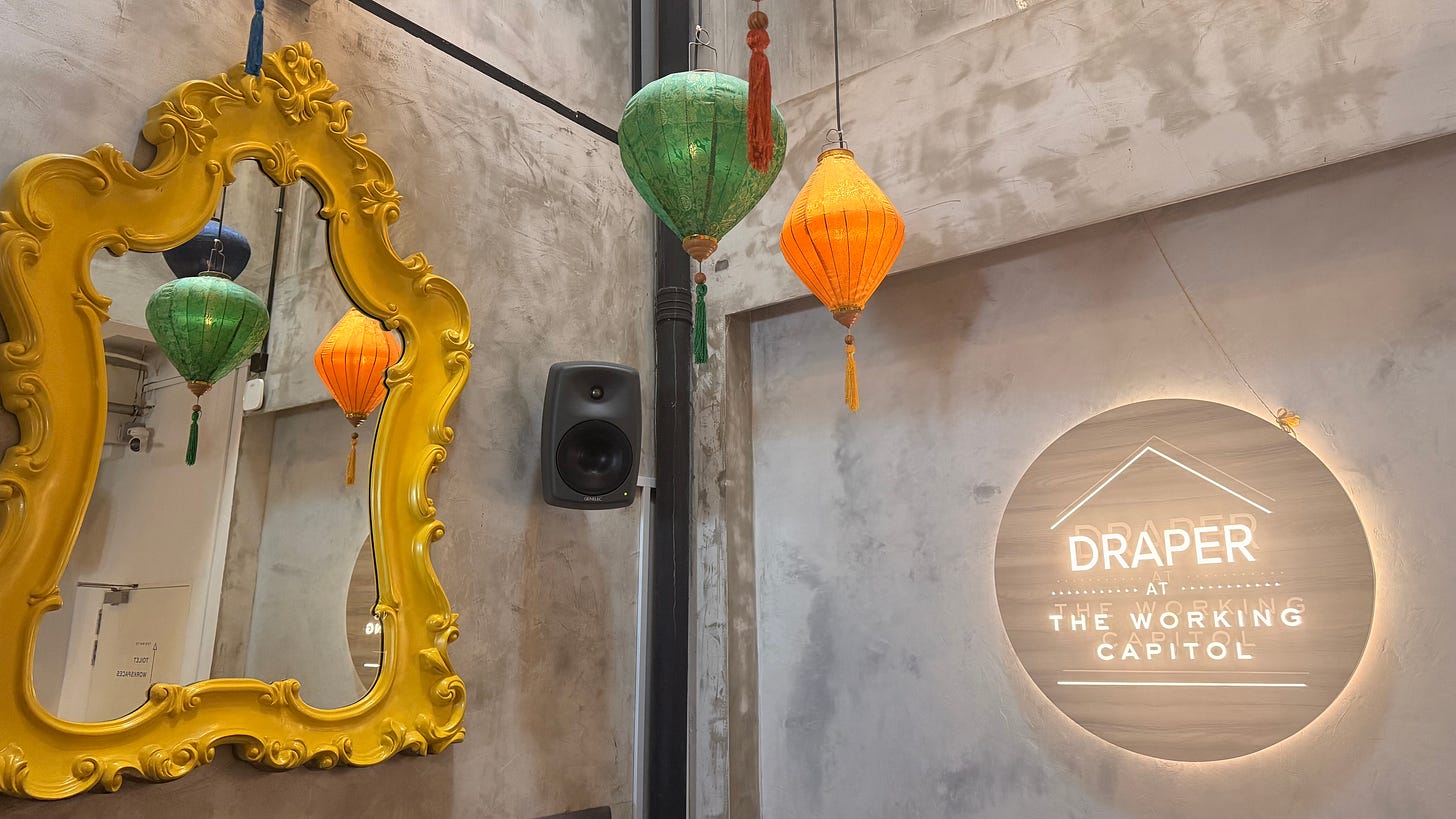
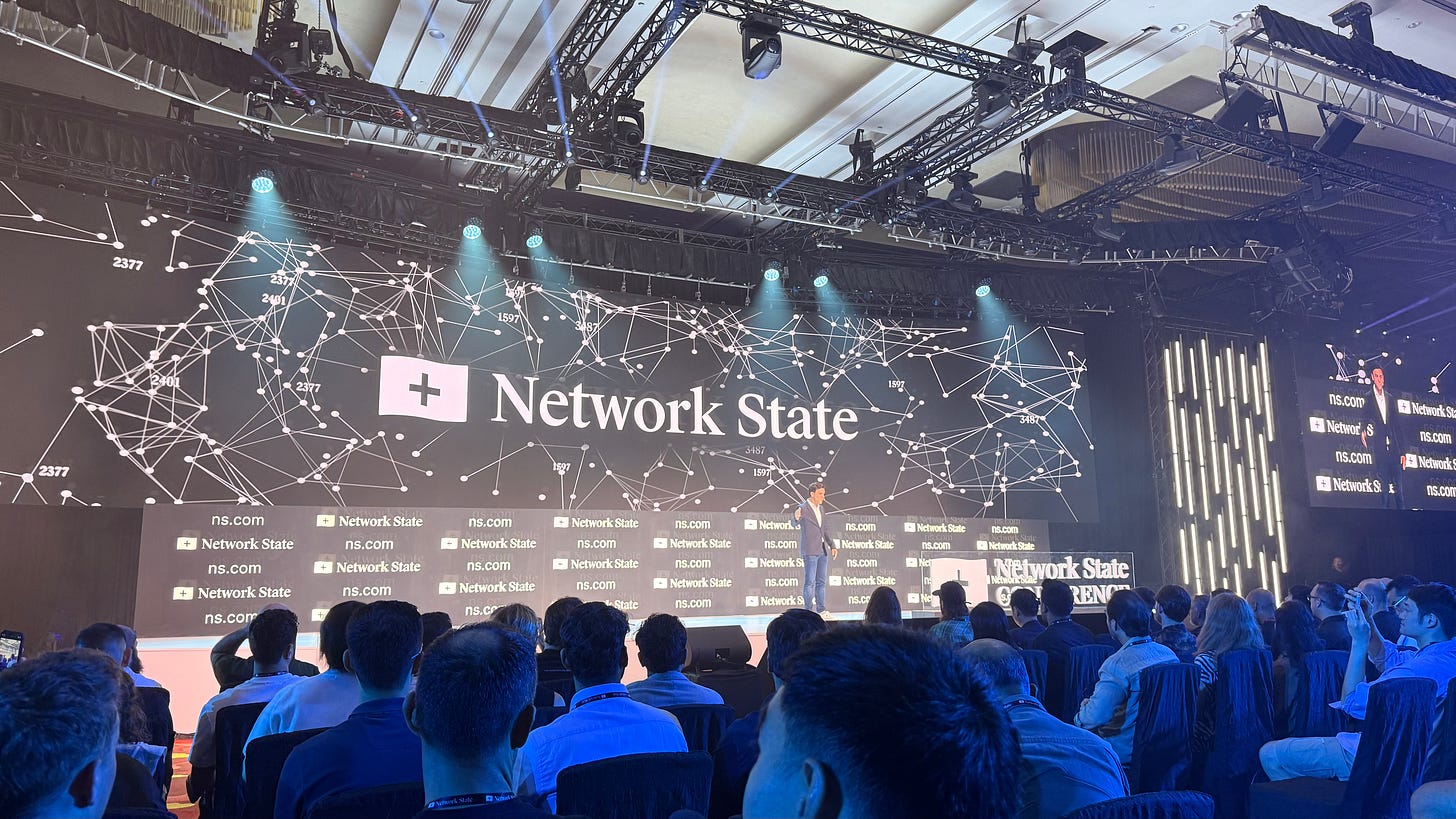

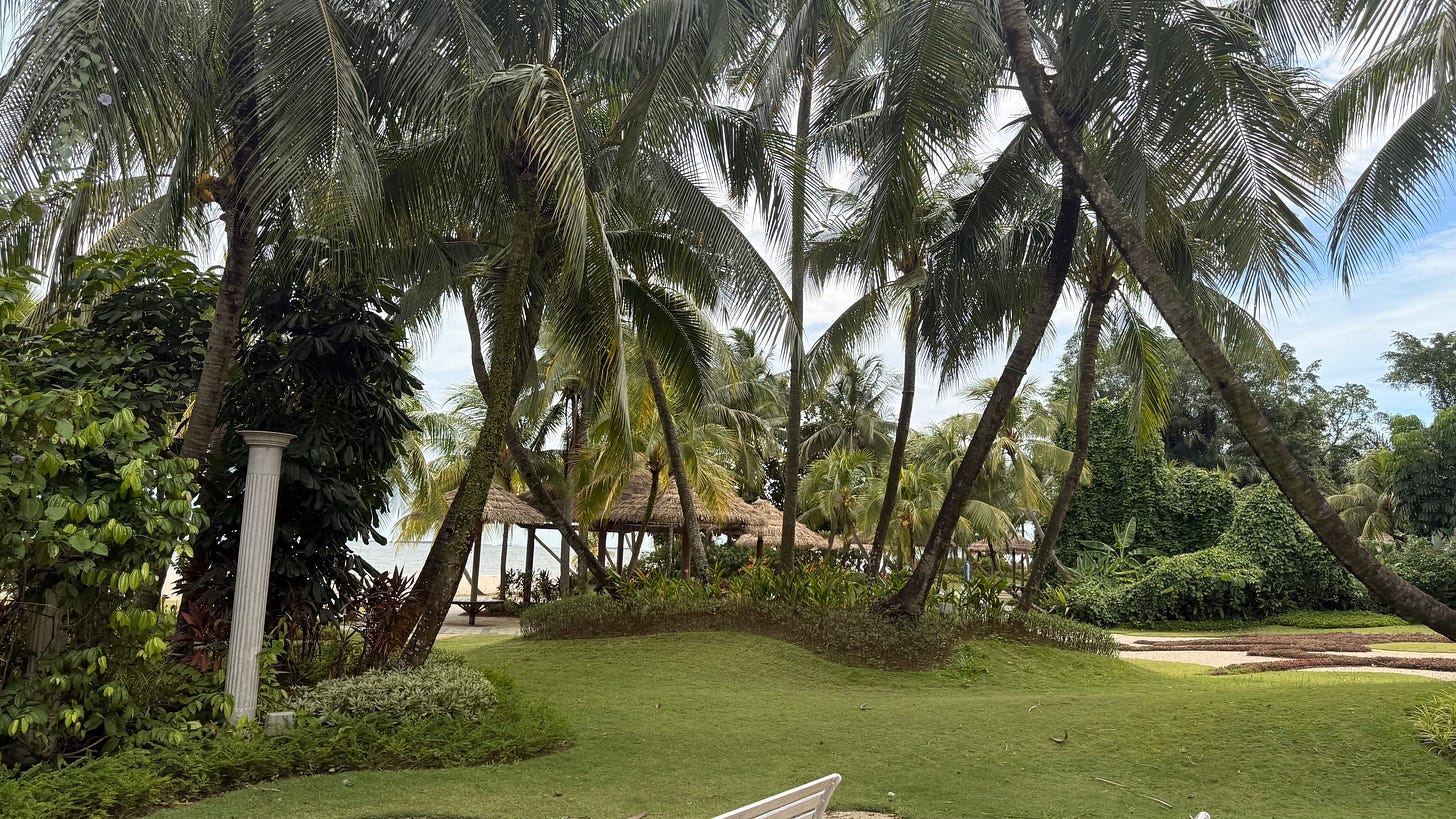
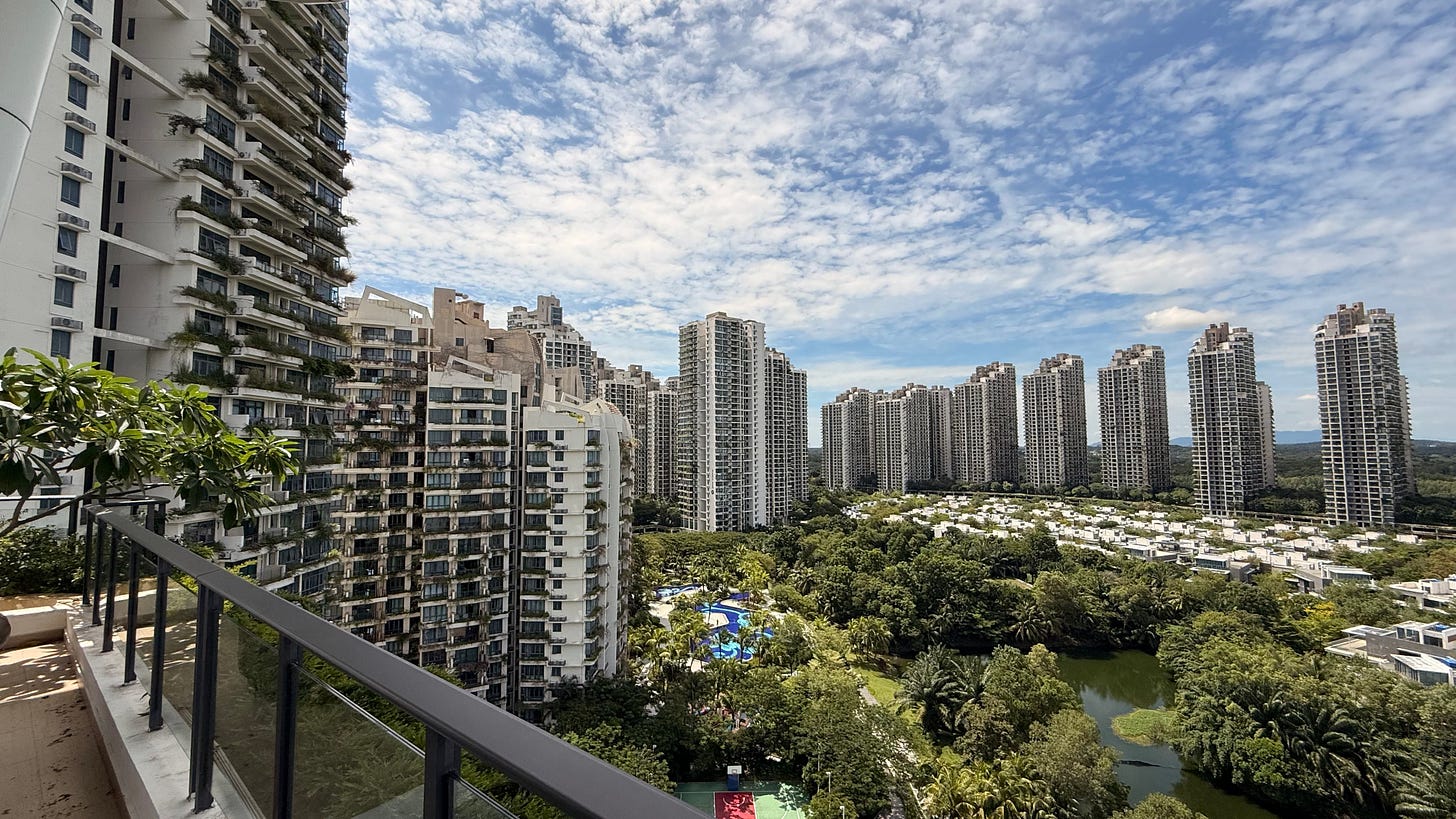
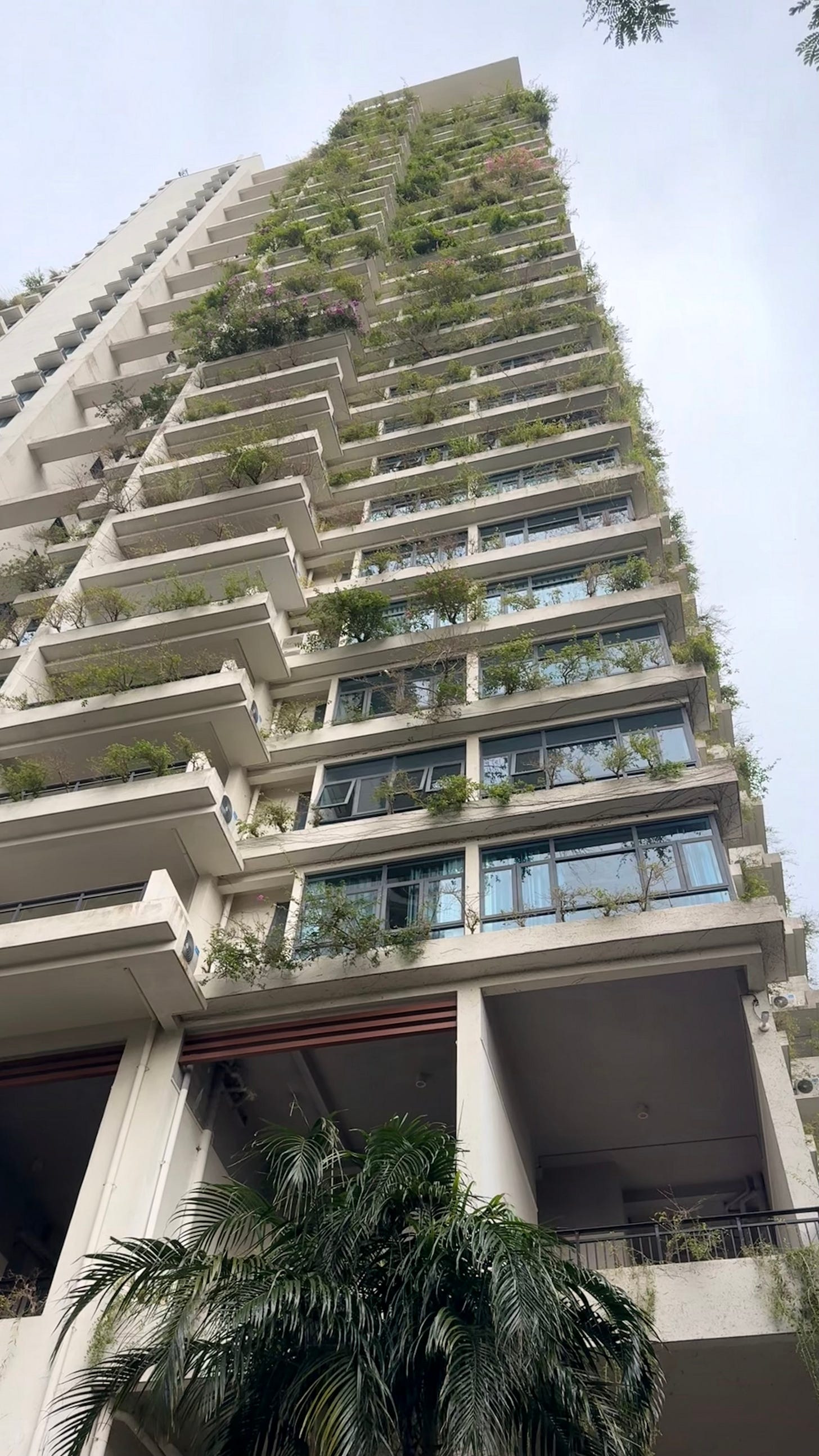
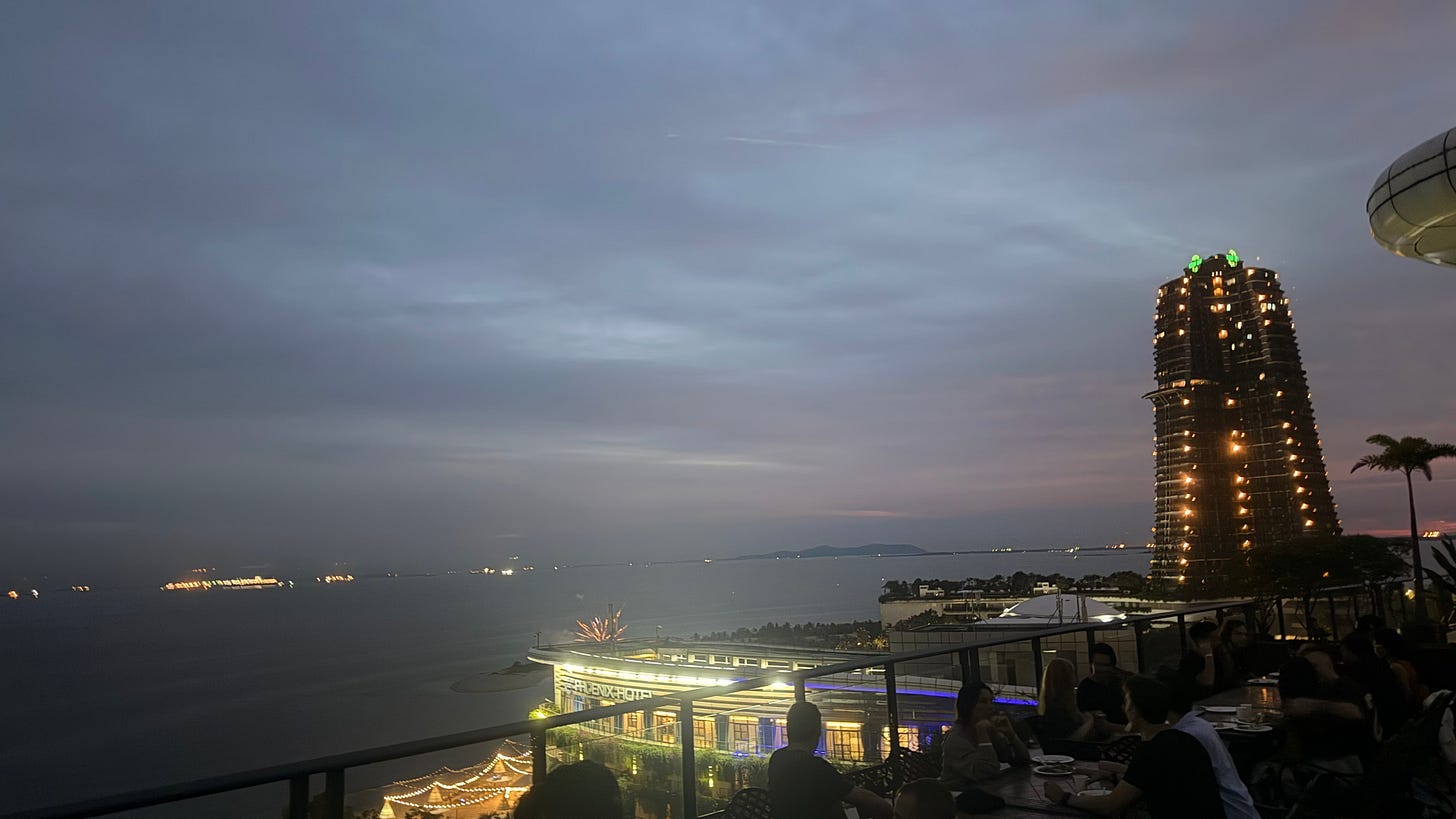


Thank you very much!! Valuable insights 🙏
Great read! It transported me back to the conference and extended my knowledge filling in the missing gaps. Congrats for the elegant and dense read that provides a full experience of last week!